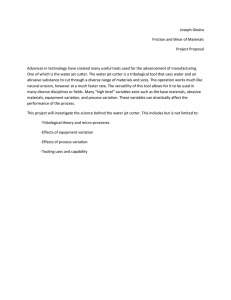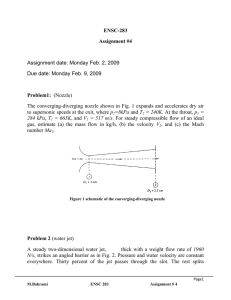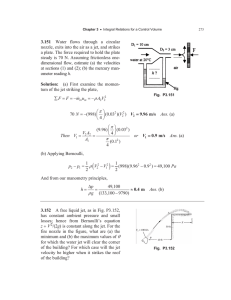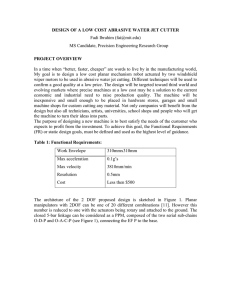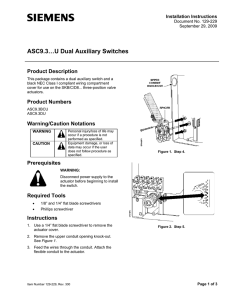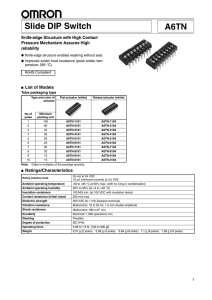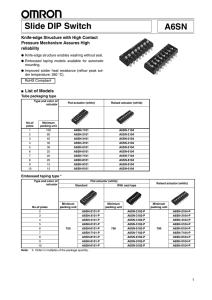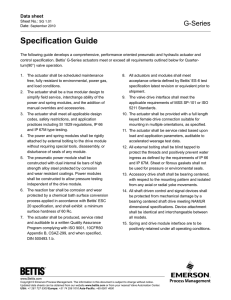DESIGN OF A LOW COST ABRASIVE WATER JET CUTTER PROJECT OVERVIEW
advertisement
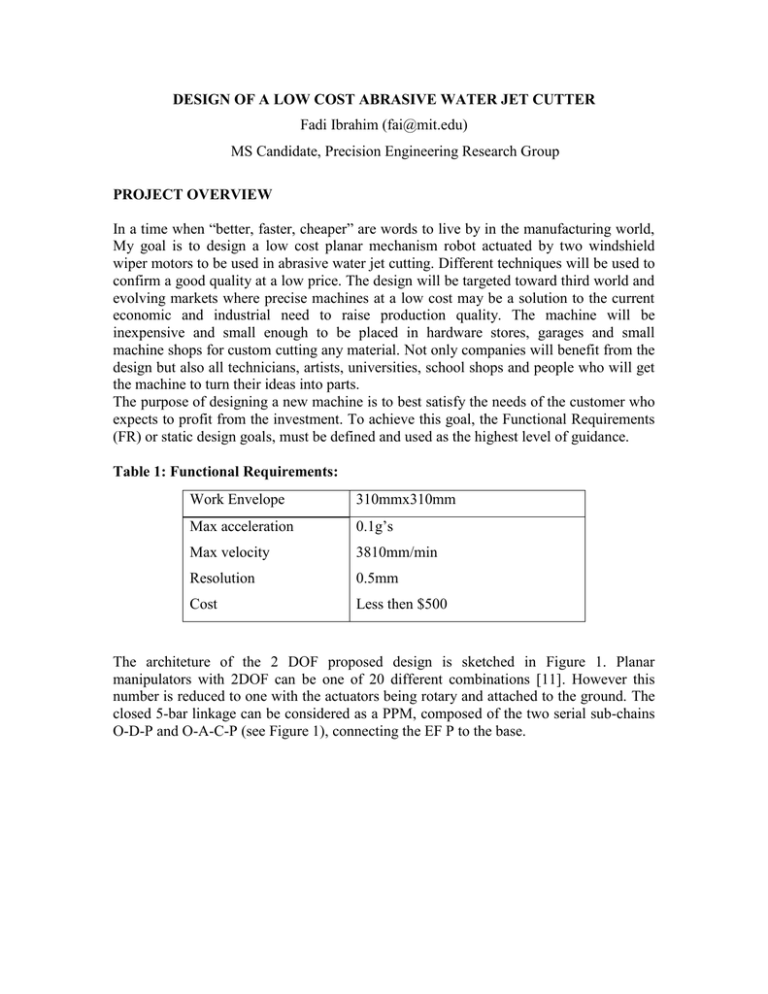
DESIGN OF A LOW COST ABRASIVE WATER JET CUTTER Fadi Ibrahim (fai@mit.edu) MS Candidate, Precision Engineering Research Group PROJECT OVERVIEW In a time when “better, faster, cheaper” are words to live by in the manufacturing world, My goal is to design a low cost planar mechanism robot actuated by two windshield wiper motors to be used in abrasive water jet cutting. Different techniques will be used to confirm a good quality at a low price. The design will be targeted toward third world and evolving markets where precise machines at a low cost may be a solution to the current economic and industrial need to raise production quality. The machine will be inexpensive and small enough to be placed in hardware stores, garages and small machine shops for custom cutting any material. Not only companies will benefit from the design but also all technicians, artists, universities, school shops and people who will get the machine to turn their ideas into parts. The purpose of designing a new machine is to best satisfy the needs of the customer who expects to profit from the investment. To achieve this goal, the Functional Requirements (FR) or static design goals, must be defined and used as the highest level of guidance. Table 1: Functional Requirements: Work Envelope 310mmx310mm Max acceleration 0.1g’s Max velocity 3810mm/min Resolution 0.5mm Cost Less then $500 The architeture of the 2 DOF proposed design is sketched in Figure 1. Planar manipulators with 2DOF can be one of 20 different combinations [11]. However this number is reduced to one with the actuators being rotary and attached to the ground. The closed 5-bar linkage can be considered as a PPM, composed of the two serial sub-chains O-D-P and O-A-C-P (see Figure 1), connecting the EF P to the base. Work Area P(x, y) D Water Jet Nozzle Water Jet Nozzle l5 1 C P(x, y) l4 2 l3 1 B C l1 l2 O B l1 l0 1.a A l2 Ө1 Ө2 Ө1 Actuator 2 2 l3 l4 Actuator 1 Actuator 2 O Ө2 A Actuator 1 1.b Figure 1: Architecture of the proposed mechanism: (a) general case, (b) symmetric case 0 , l1 l2 , l3 l4 l5

